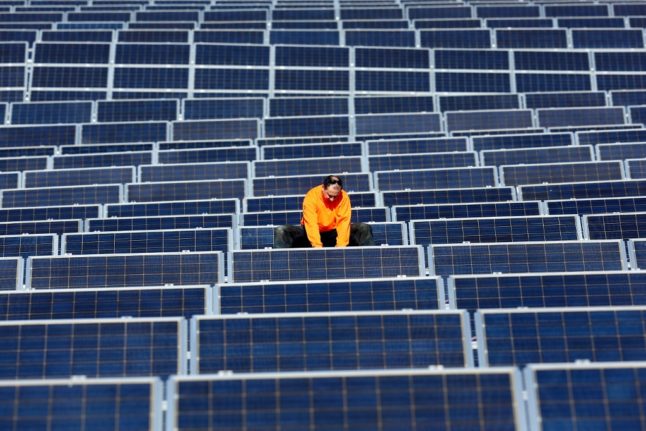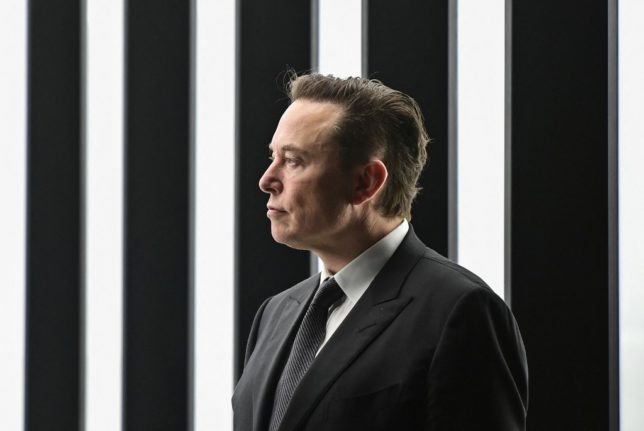“Spain should build a massive solar array. Could power all of Europe,” tweeted Elon Musk on Monday in response to a story published in tech website Slashdot about the Spanish government’s plans to become a huge producer of microchips.
READ MORE: Spain to invest €11 billion to become Europe’s microchip factory
The billionaire’s comments are certainly serving to help promote Spain as a country determined to change its economic model from tourism and services dependent to a tech and renewables powerhouse.
Meta, IBM, Google and Amazon are also among the big players that have announced they will set up huge data centres and create thousands of jobs in Spain in the coming years.
Thanks to billions of euros in EU recovery funds, Spain’s Prime Minister has been able to announce ambitious projects that will contribute to the country’s digital transformation.
Solar power has so far not been one of those main pillars, but that may be because it’s already an industry that’s in full swing in Spain, which suggests Elon Musk does have his finger on the pulse.
In 2019, the country returned to being Europe’s biggest solar energy producer after an 11-year plateau in the industry’s development.
This slump came in large part as a result of legislation introduced in 2013 which made it compulsory for any individual or company to hook their solar panels up to the national grid to be metered and taxed, or face fines running into millions of euros.
Luckily, this controversial ‘solar tax’ – slammed as “stupid” and “ludicrous” in international publications – is now a thing of the past, after the law was scrapped in 2018 and other measures were introduced to make energy self-sufficiency easier.
This has spurred a ‘solar panel rush’ in Spain, along with the fact that national electricity rates in the country have kept beating records in 2021 and 2022.
In early 2022, Spain was exporting record amounts of solar energy, especially to France and Portugal, at a favourable price.
This has been largely due to the fact the network of electricity interconnections Spain has with its nearest neighbours grew by 233 percent in 2021, tripling the revenue for Spain from these exports up to €110 million.
So what’s stopping Spain from doing what Elon Musk suggests?
For starters, a huge investment to improve the interconnections network across the continent and perhaps five billion more solar panels.
Despite Spain’s recent growth in interconnections capacity, in 2020 it had still not reached the minimum of 10 percent recommended by the European Union for, the only European country to fall short, according to the European Network of Managers of Electricity Transmission Networks (ENTSO-E).
The EU consumes around 11 percent of the world energy total and according to industry experts it would reportedly take 51.4 billion 350W solar panels to power the world.
This explains Spain’s former Minister of Science and Innovation Pedro Duque’s reply to Elon Musk: “We welcome investments in Spain to boost our already large production of renewables. All our legal framework is prepared for it. Know any investors?”.
In the context of the war in Ukraine and what Putin’s invasion has meant for some European countries dependent on Russian gas, the European Commission recently said that it will do “whatever it takes” to transform Europe’s solar manufacturing industry.

China is the world’s top manufacturer of solar energy followed by the United States, India, Japan and Vietnam. European countries lag behind in terms of solar panel production, with Spain among other manufacturers on the continent as well as France, Italy and Slovenia.
As the EU’s attention turns to energy self-sufficiency, sunny Spain certainly appears to have the potential to be able to lead the way, in terms of both natural gas dispensation and renewable energy.
It won’t be able to do it alone, however.
Spain has a fragile economy that suffered greatly as a result of the Covid-19 pandemic, and only the investment of billions of euros from Brussels allowed it to get back on its feet and embark on ambitious transformation projects.
Perhaps a cash injection from Elon Musk himself – a man with a reported net worth of $267 billion in 2022 – could help take Spain’s photovoltaic industry to a whole new level?
Spanish Prime Minister Pedro Sánchez seems to think so, having replied to Musk’s tweet with: “We’re already implementing (the) most ambitious plan towards (an) efficient & sustainable energy system. All sectors on board. Maximizing opportunities, digitalization and value chain for a long lasting success. (The) time is now. Let’s get it right. Come and see. We welcome investors in Spain”.
READ ALSO:




 Please whitelist us to continue reading.
Please whitelist us to continue reading.
Member comments